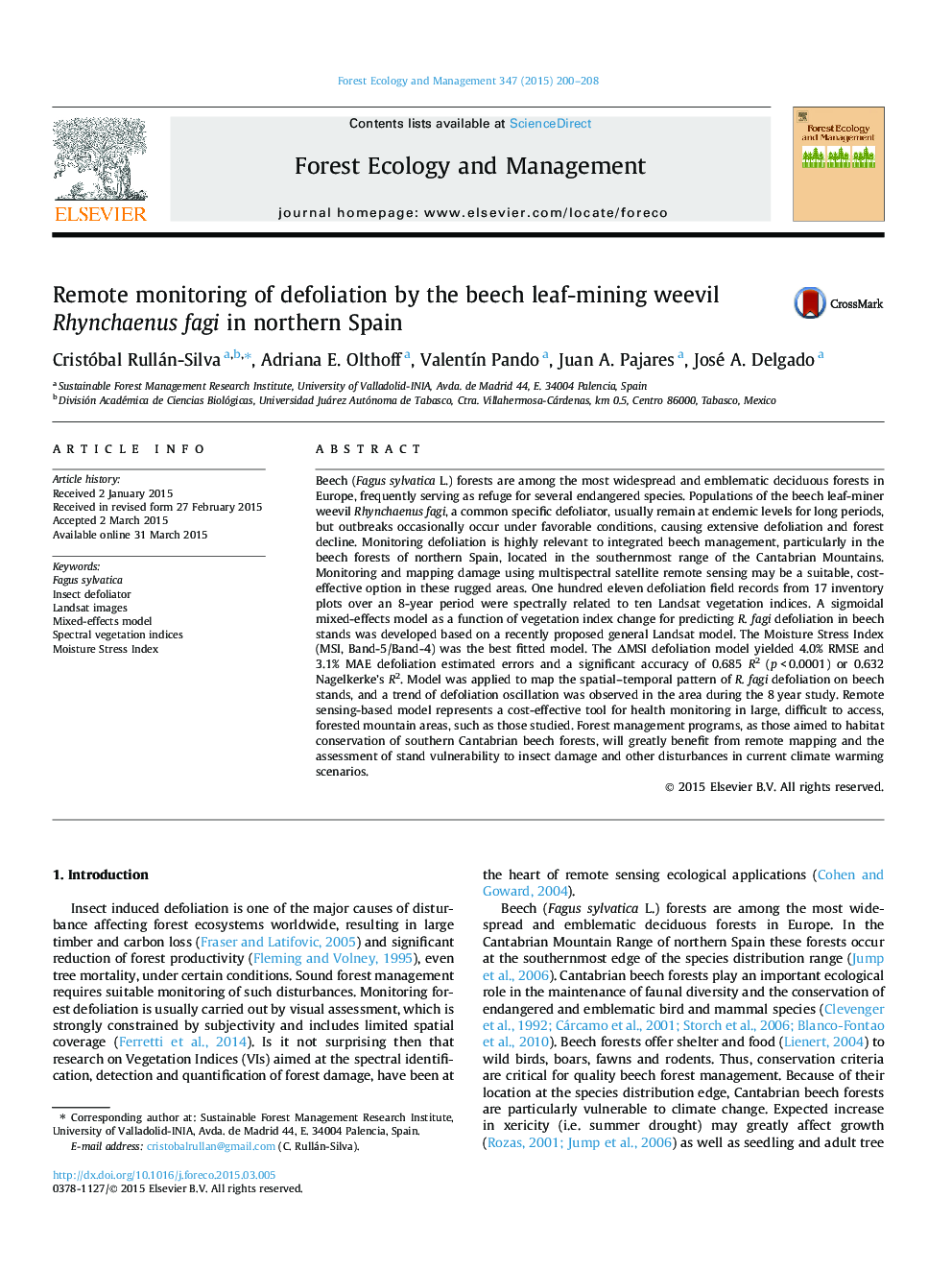| کد مقاله | کد نشریه | سال انتشار | مقاله انگلیسی | نسخه تمام متن |
|---|---|---|---|---|
| 86258 | 159174 | 2015 | 9 صفحه PDF | دانلود رایگان |

• A mixed-effects model to monitoring R. fagi defoliation in beech forest is proposed.
• Vegetation index changes were correlated with 7-year data from damage inventories.
• The MSI was the vegetation index that best fitted the model for the study area.
• The model yielded an accuracy of 0.685 R2 (p < 0.0001) or 0.632 Nagelkerke’s R2.
• The model gives a continuous mapping of defoliation in beech forests through time.
Beech (Fagus sylvatica L.) forests are among the most widespread and emblematic deciduous forests in Europe, frequently serving as refuge for several endangered species. Populations of the beech leaf-miner weevil Rhynchaenus fagi, a common specific defoliator, usually remain at endemic levels for long periods, but outbreaks occasionally occur under favorable conditions, causing extensive defoliation and forest decline. Monitoring defoliation is highly relevant to integrated beech management, particularly in the beech forests of northern Spain, located in the southernmost range of the Cantabrian Mountains. Monitoring and mapping damage using multispectral satellite remote sensing may be a suitable, cost-effective option in these rugged areas. One hundred eleven defoliation field records from 17 inventory plots over an 8-year period were spectrally related to ten Landsat vegetation indices. A sigmoidal mixed-effects model as a function of vegetation index change for predicting R. fagi defoliation in beech stands was developed based on a recently proposed general Landsat model. The Moisture Stress Index (MSI, Band-5/Band-4) was the best fitted model. The ΔMSI defoliation model yielded 4.0% RMSE and 3.1% MAE defoliation estimated errors and a significant accuracy of 0.685 R2 (p < 0.0001) or 0.632 Nagelkerke’s R2. Model was applied to map the spatial–temporal pattern of R. fagi defoliation on beech stands, and a trend of defoliation oscillation was observed in the area during the 8 year study. Remote sensing-based model represents a cost-effective tool for health monitoring in large, difficult to access, forested mountain areas, such as those studied. Forest management programs, as those aimed to habitat conservation of southern Cantabrian beech forests, will greatly benefit from remote mapping and the assessment of stand vulnerability to insect damage and other disturbances in current climate warming scenarios.
Journal: Forest Ecology and Management - Volume 347, 1 July 2015, Pages 200–208